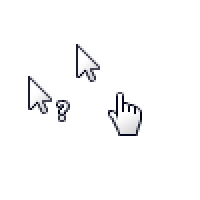

In this scenario, a user may perceive a slight delay when interacting with a server-rendered cursor because they are interacting with a graphical representation of the cursor that is being remoted across the network instead a local cursor rendered directly on the client hardware. It can also result in a lot of redrawing of transient intermediate frames that are unnecessary, intermittent information that a user doesn’t need, like when scrolling or moving a window rapidly. a complex CAD model where the application is recalculating the part), it can become a bottleneck. This can generate high-bandwidth and, if the application is very complex (Ex. This process may need to be executed hundreds or thousands of times to capture every change in cursor position, depending on the user movement of the mouse. Every time the user moves the mouse, the client sends a message to the server, so the desktop or application can be redrawn and the resulting image (the new cursor position) is sent back to the client. Server-rendered cursors can be very costly for virtual desktops and applications. Modern and more complex types such as 32-Bit color cursors may require use of new HDX graphics mode and recent/current versions of the Citrix client.

This is more of case with modern applications running in Citrix sessions configured with HDX Legacy Graphics mode and older Receiver clients. Lack of cursor compatibility with HDX Graphics and Citrix client in use Because of this, it is not possible to query the Windows OS and detect the cursor in use in order to redirect for client rendering.ĪutoCAD from Autodesk is a common example of an application that uses custom cursors.

In this scenario, the application cursor looks no different to the HDX graphics process than any other image on screen. These applications do not use the standard Windows OS functions to set and render cursors on screen. There are some applications that use proprietary cursor types and handle cursor rendering on their own. There are two special cases where client rendering of the cursor is not possible for a particular Citrix session and the mouse cursor is server-rendered as a result: This means there is no added latency to the mouse movement from the virtual session. A client-rendered cursor delivers the best performance and user experience as it behaves the same as with any local application running on the physical endpoint. By default, the HDX graphics process will detect OS and application cursors on the VDA (server side), capture the cursor image and send to the Citrix Receiver or Workspace App for rendering locally on the client. In most cases, mouse cursors are client-rendered. In a Citrix Virtual Apps and Desktops environment, mouse cursors are presented to a user in one of two ways in an ICA session: client-rendered or server-rendered.


 0 kommentar(er)
0 kommentar(er)
